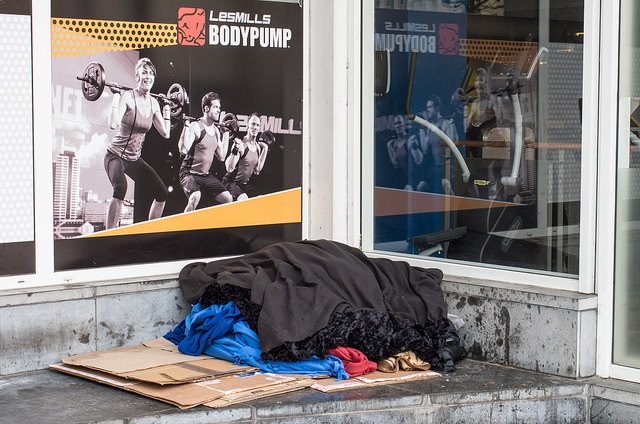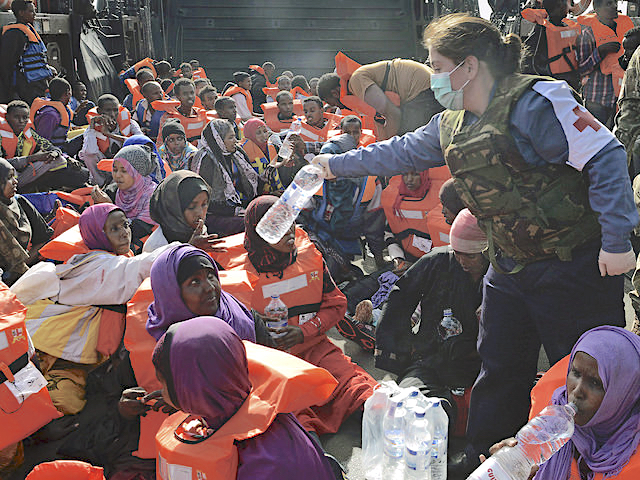Sometimes it’s easier to perceive a country’s most pressing problems when you don’t speak the language. It was August, 1986. I had only been in Germany a few weeks. All I could really say were sentences like “It is X” and “I am Y”. Understanding others was even harder. But I had already figured out that the words Obdachlosen and Asylanten were crucial for understanding the nation’s future.
Perversely, I put off looking them up in my tiny dictionary. Maybe I was afraid there wouldn’t be an entry for them. Yet I also know that something inside me demanded to puzzle them out purely from context. I did that a lot during my first months as an exchange student. Somehow, it seemed more honorable to learn German the way natives did than to rely on English translations. More importantly, my approach helped me to discern connections that a list of vocabulary words never could.
That’s why I was able to determine that, even though the Obdachlosen and Asylanten were clearly distinct categories, they had a common denominator for most Germans: the threat posed by outsiders. It was different back home in the United States. We certainly had a major homelessness problem in the mid-1980s. And asylum-seekers were in the news from time to time, particularly those from communist countries like Cuba. But they weren’t linked all that closely in the American mind.
Part of the reason is that many of the most visible homeless people in American cities back then made it a point to underscore the fact that they were “insiders” forced by poor luck or perfidy to live outside. Although Vietnam War veterans led the way in this regard, a lot of people who had never served or claimed to serve still reinforced their requests for help with appeals to patriotism. While there were no doubt thousands of functionally homeless illegal immigrants from war-torn Central America who were de facto asylum-seekers back then, they usually avoided making their presence known, lest they risk being deported.
It was different in Germany and, to a lesser extent, other European Community nations because their far more robust social welfare systems ensured that the vast majority of struggling citizens were given at least enough government assistance to keep them out of sight and therefore out of mind. They were usually grouped into a different demographic category that I came to learn early in my year abroad, the Arbeitslosen. While there were surely citizens of the Federal Republic who could have been classified as homeless in the 1980s, the most visible people living on the streets tended to be those who stood out as “foreign”, at least to the German way of thinking.
Further complicating matters was the fact that most Europeans over the age of fifty remembered the aftermath of the Second World War, when millions of refugees were streaming back and forth across the continent and many cities lay in ruins. In those days of deprivation, homelessness was almost the norm. Although these painful memories could have elicited empathy for the refugees of the 1980s, most established citizens seemed more invested in not identifying with their plight. From their perspective, victims of the war had a perfect excuse for their condition, whereas present-day homeless people did not. And those among them who were also asylum-seekers were thought to be using political conditions in their homelands as a pretext for moving to a place with better-paying jobs and social benefits.
The longer I spent in Germany, the more clear it also became that the prevailing definition of “foreigner” there differed sharply from what it signified to most Americans. People who had been living in the Federal Republic for decades or had even been born there, such as the Roma people, still didn’t count as Germans. But so-called ethnic Germans from the Eastern Bloc and the Soviet Union did. In the United States, by contrast, it was easier for immigrants to feel as if they belonged even when their legal status was in doubt.
All these factors conspired to make Germans perceive homelessness as a threat to their national identity. Again and again, I encountered people there who were acquainted with the problem of street people in the United States and wanted to talk about it, but were unwilling to acknowledge the Obdachlosen nearby. They mentally erased them, simply because their existence did not fit the image they had of Germany. When they came up at all, it was typically in a discussion of how the country needed to strengthen its borders to prevent outsiders from moving there.
A lot has changed in the nearly three decades since. The number of visibly homeless people in Germany has increased to the point where not seeing them requires both lots of practice and a strong will, as is true in most of Europe’s better-off nations. The sense of superiority that Germans conveyed to me repeatedly during my year abroad simply because their social net prevented unsightly demonstrations of inequality would be much harder to muster. But the relationship between homelessness and immigration perceived in the 1980s persists.
At a metaphoric level, it underpins the politics of PEGIDA and its right-wing populist counterparts throughout Europe. Immigrants, whether asylum-seekers or economic refugees, are conceived of as “homeless” because they are outside of their countries of origin in a place where they can never truly attain the status of insiders. Expressions of patriotism almost inevitably demonstrate antipathy towards this foreign presence, because the integrity of the homeland is conceived in ethnic, cultural and religious terms. People living on the street could festoon themselves with all the German flags they want without ever being regarded as properly German.
Photograph courtesy of Joel Schalit





